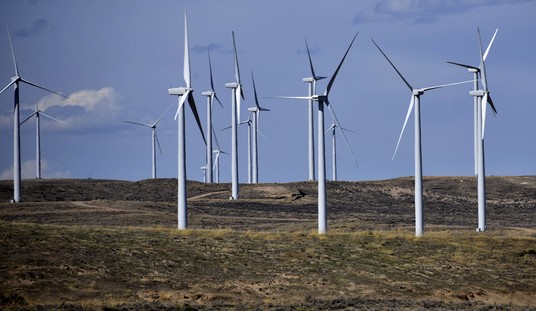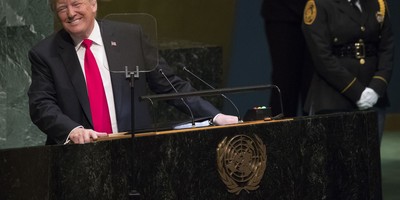"Not since the Great Depression." "Not since the 1930s." You hear those phrases a lot these days, and with some reason. As Congress prepares to pass the Democratic stimulus package, it may be worthwhile to look back at Franklin Roosevelt's New Deal and consider how well it worked as policy -- and politically.

There's a fairly broad consensus on policy that some of Roosevelt's actions made a positive difference but that they didn't get us out of the Depression. Amity Shlaes in her path-breaking "The Forgotten Man" makes a strong case that some of Roosevelt's moves blocked recovery, and even his admirers admit that his policies led to a sharp recession in 1937-38. After eight years of the New Deal, unemployment remained at 15 percent in 1940 -- double the figure for today. What really got us out of the Depression was World War II. The total number of employed persons and military personnel increased from 44 million in 1938 to 65 million in 1944.
So it would be unwise to copy the New Deal as a recipe for economic recovery. And the policies that produced the wartime boom are not replicable today. We are not going to have rationing, wage and price controls, government spending nearly half the gross domestic product, 91 percent tax rates and a 12-million-man military (the equivalent today would be 27 million).
There has been general agreement, however, that Roosevelt's policies were politically successful. Most of us in the political commentary business make frequent use of the phrase "New Deal Democratic majority" and tend to believe that Roosevelt's policies worked for his party for a long generation extending into the 1960s.
Recommended
I think the picture is more complicated than that. Democrats did win big in the 1934 and 1936 elections. They made big gains in large cities and factory towns, many of which were staunchly Republican in the 1920s. But these gains were not sustained, as the effects of some New Deal policies -- high taxes on high earners, the unionization-promoting Wagner Act and jobs programs like the WPA -- became apparent.
In early 1937, unions engaged in sit-in strikes in auto and steel factories; they were plainly illegal, but Democratic governors in Michigan and Ohio refused to enforce court orders against them. Later that year, the "capital strike" Shlaes describes led to a sharp recession.
The jobs programs were widely criticized as "boondoggles" and "leaf-raking." Allegations of political favoritism and corruption were widespread. In the 1938 off-year elections, Democrats lost 81 House seats, 51 of them in the industrial belt from Pennsylvania and Upstate New York west to the Upper Midwest. The Democratic governors of Michigan and Ohio were defeated for re-election. The congressional district that included Flint, Mich., site of the first sit-in strike, went from Democratic to Republican; so did most congressional districts in Ohio.
As pro-New Deal historians have conceded, New Deal policies no longer had congressional majorities, given the opposition of many Southern Democrats. Nor was the outlook for Democrats rosy as the 1940 elections approached. Polling, then in its rudimentary stages, suggested that Republicans would win if the election were decided on domestic issues.
But in September 1939, World War II broke out in Europe. In June 1940, France fell; Adolf Hitler and Joseph Stalin, then allies, seemed to have most of Europe under their sway. Just days later, the Republicans nominated Wendell Willkie, an attractive candidate with no experience in foreign policy. The Democrats met in July, and Roosevelt sent a letter saying that he did not want to be a candidate. But, with help from the Chicago commissioner of sewers piping over a loudspeaker, "We want Roosevelt!" the president was renominated. He won his third term in November not, as he put it later, as "Dr. New Deal," but as an experienced leader when the nation was facing grave peril.
"The American people in their righteous might will win through to absolute victory," Roosevelt declared in his Pearl Harbor speech, and so they did by September 1945. In my view, it was the war effort, the mobilization of big government, big business and big labor, that much more than the New Deal enhanced the prestige of the state. It got Americans proud of thinking of themselves as small cogs in very large machines. It made them amenable to statist policies that they would never have accepted in the 1920s and at which many of them were bridling in the late 1930s.
No two political times are ever the same. But as we watch the stimulus package moving to passage, we get the whiff of bailout favoritism and crony capitalism that was also present in the New Deal. The forced unionization envisaged by the card-check bill may prove to be no more popular than the unionization forced by the sit-ins was in Michigan and Ohio in 1938. Today's Democratic programs may get as mixed a political reaction as the New Deal did in the years before World War II.
























Join the conversation as a VIP Member